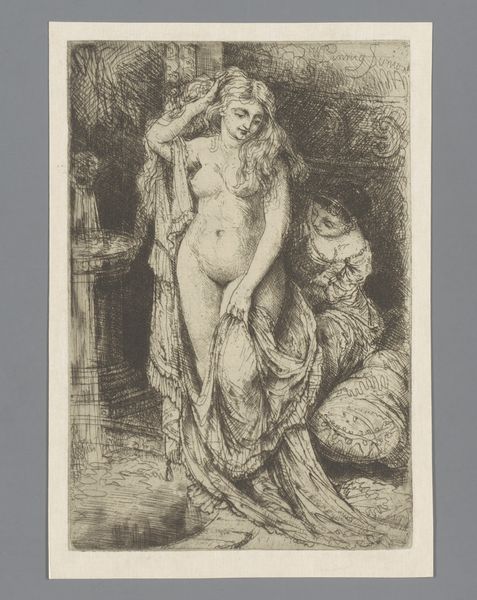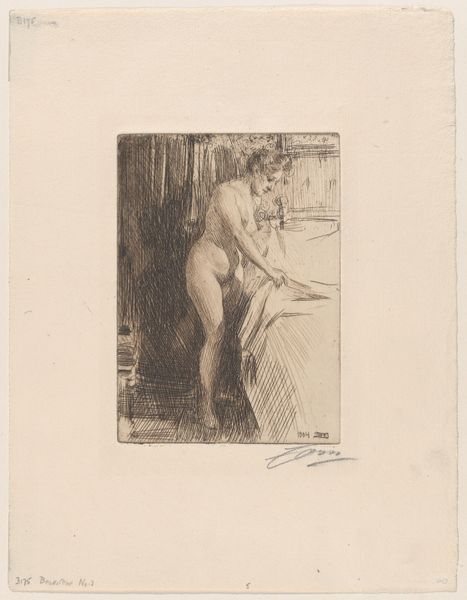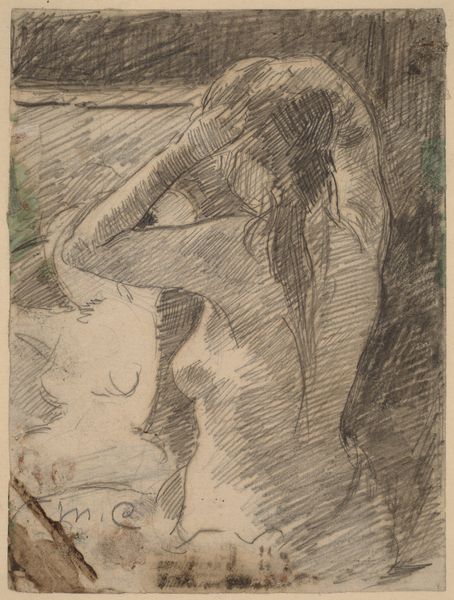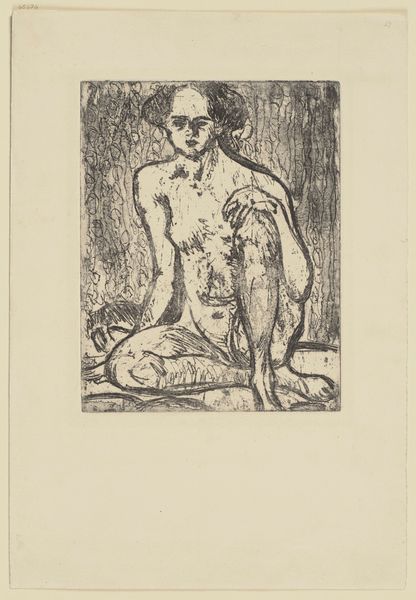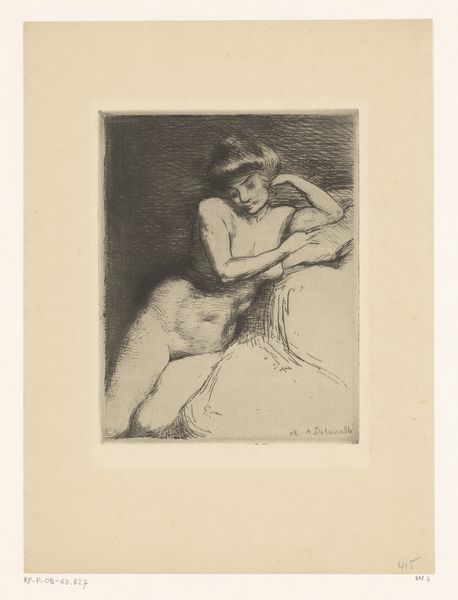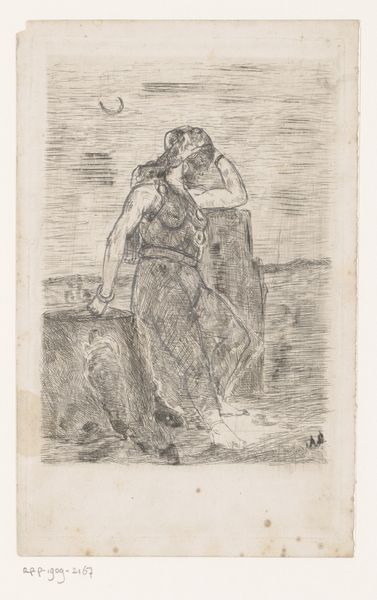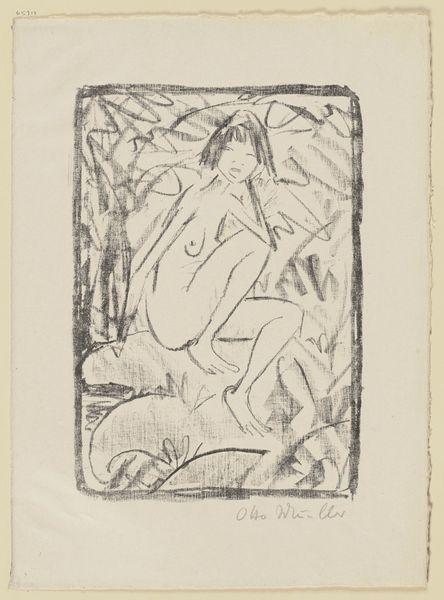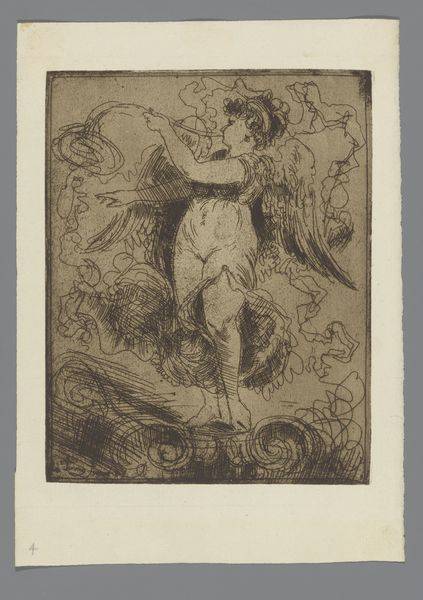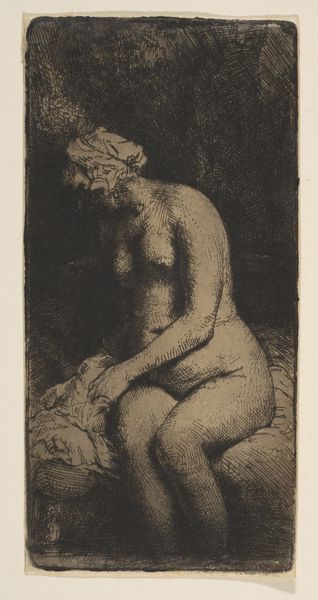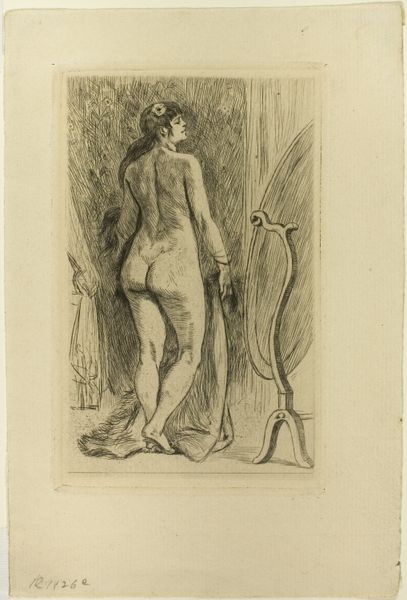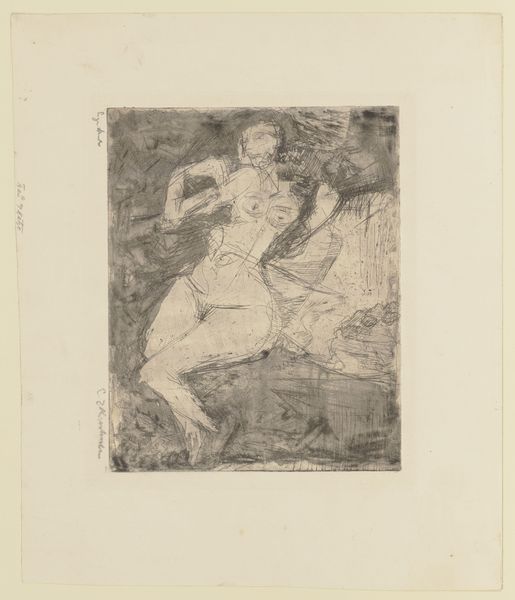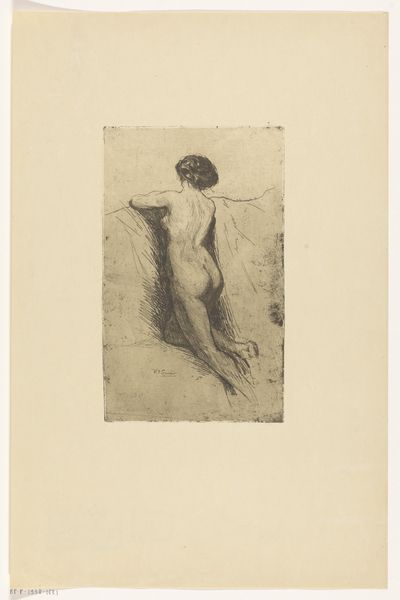
drawing, print, etching
#
drawing
# print
#
etching
#
figuration
#
genre-painting
#
nude
Dimensions: height 125 mm, width 76 mm
Copyright: Rijks Museum: Open Domain
This etching of a seated nude woman was made by Willem Linnig II in the 19th century. The etching process is key to understanding the image. A metal plate, likely copper, would have been coated with a waxy, acid-resistant ground. Linnig would then have drawn through this ground with a sharp needle, exposing the metal beneath. The plate was then submerged in acid, which bit into the exposed lines, creating grooves. Ink was then applied to the plate, filling these grooves, and the surface wiped clean. Finally, the plate was pressed onto paper, transferring the ink and creating the image you see here. Notice how the density and direction of the etched lines create a sense of form and shadow. This technique, demanding precision and control, results in a print with a distinctive handmade quality, even though it is mechanically reproduced. It underscores the intense labor involved in the creation, inviting us to consider the cultural values embedded in this process.
Comments
No comments
Be the first to comment and join the conversation on the ultimate creative platform.
